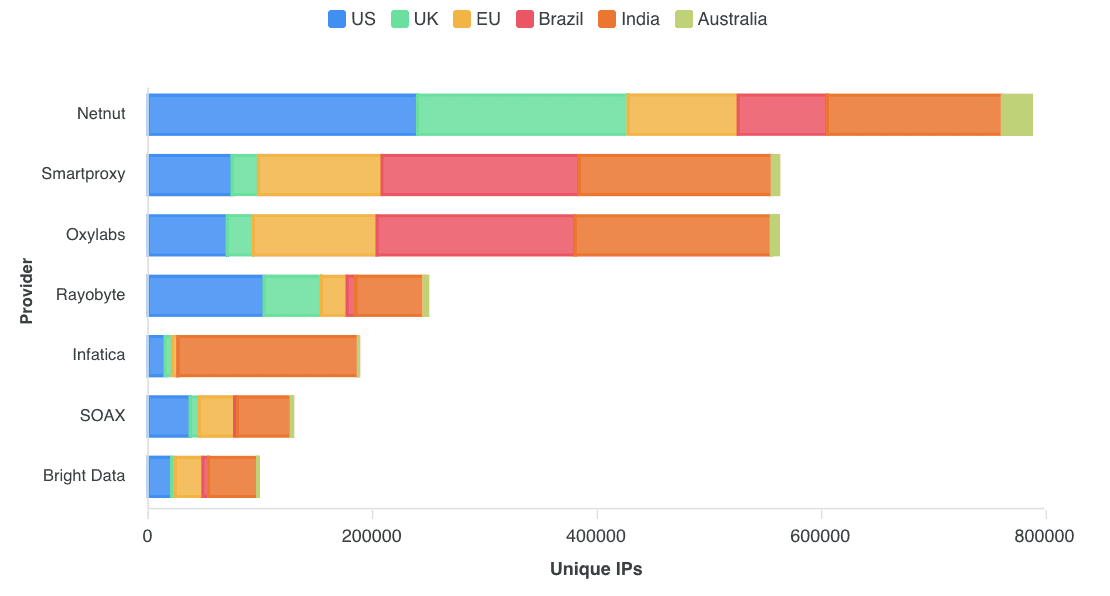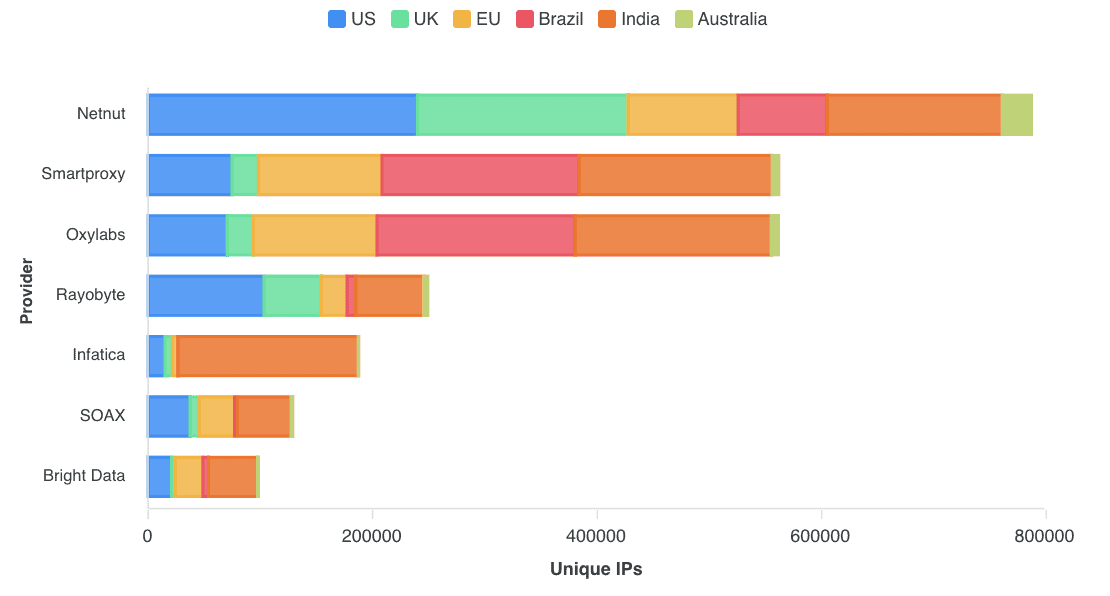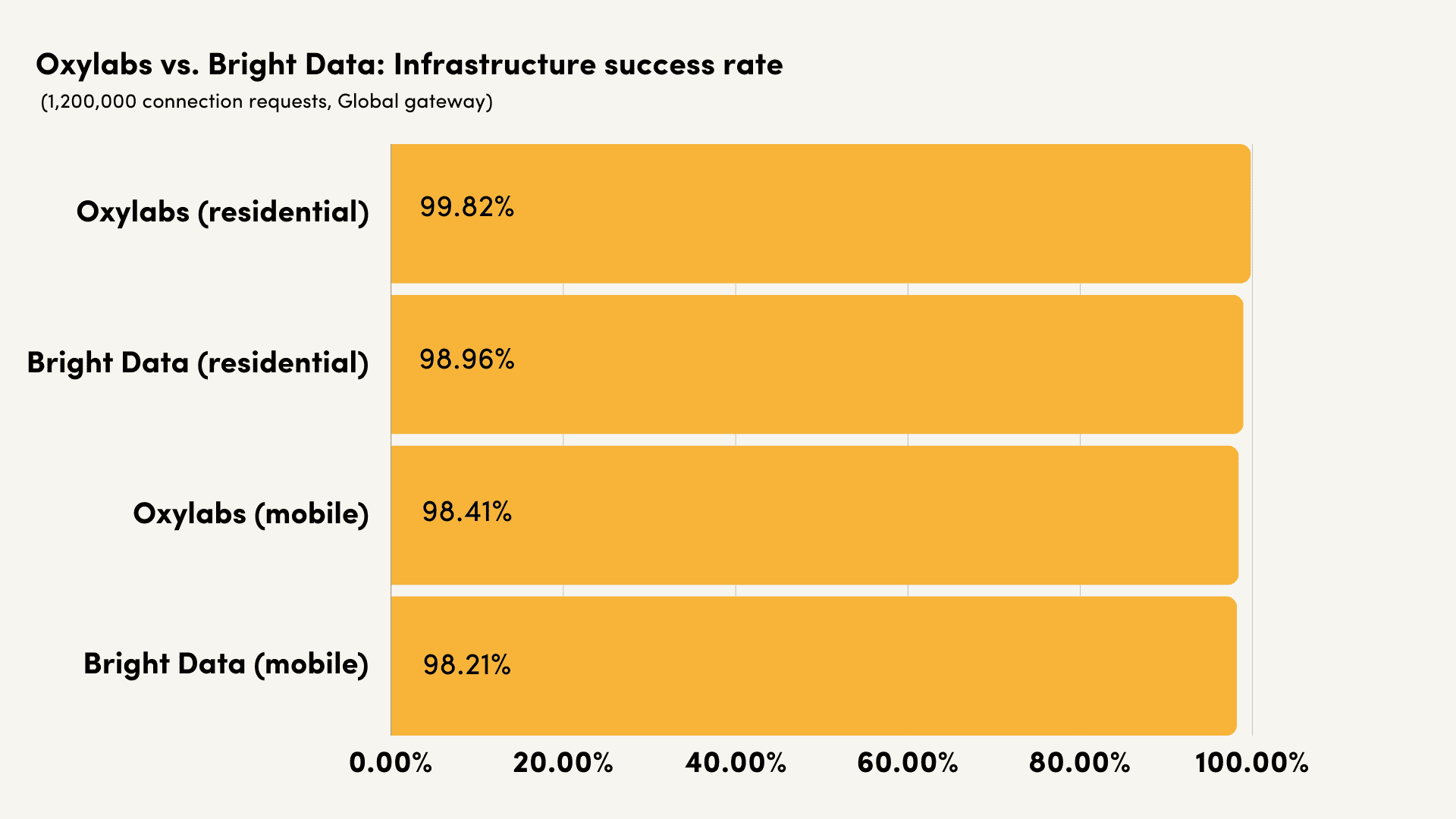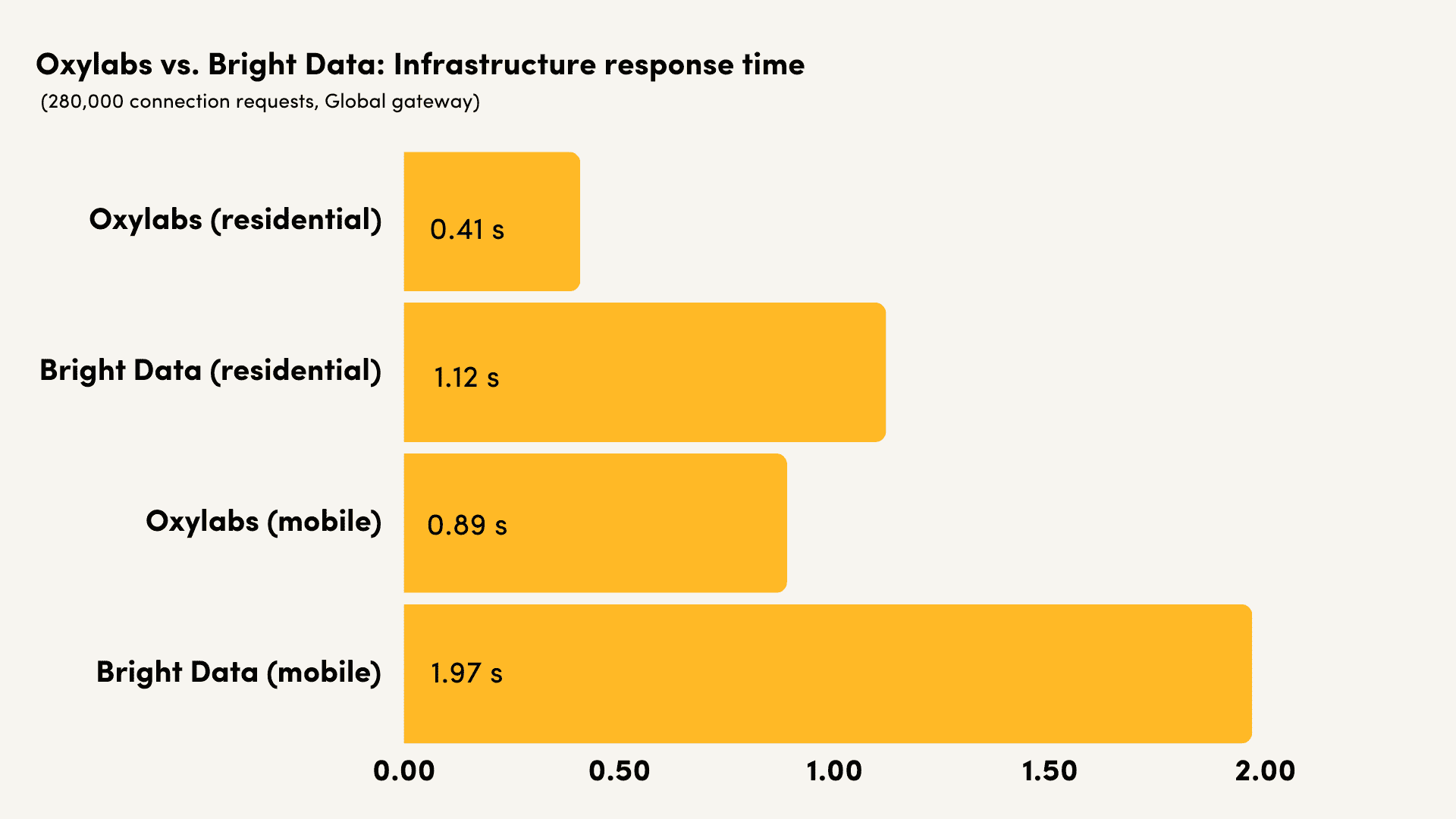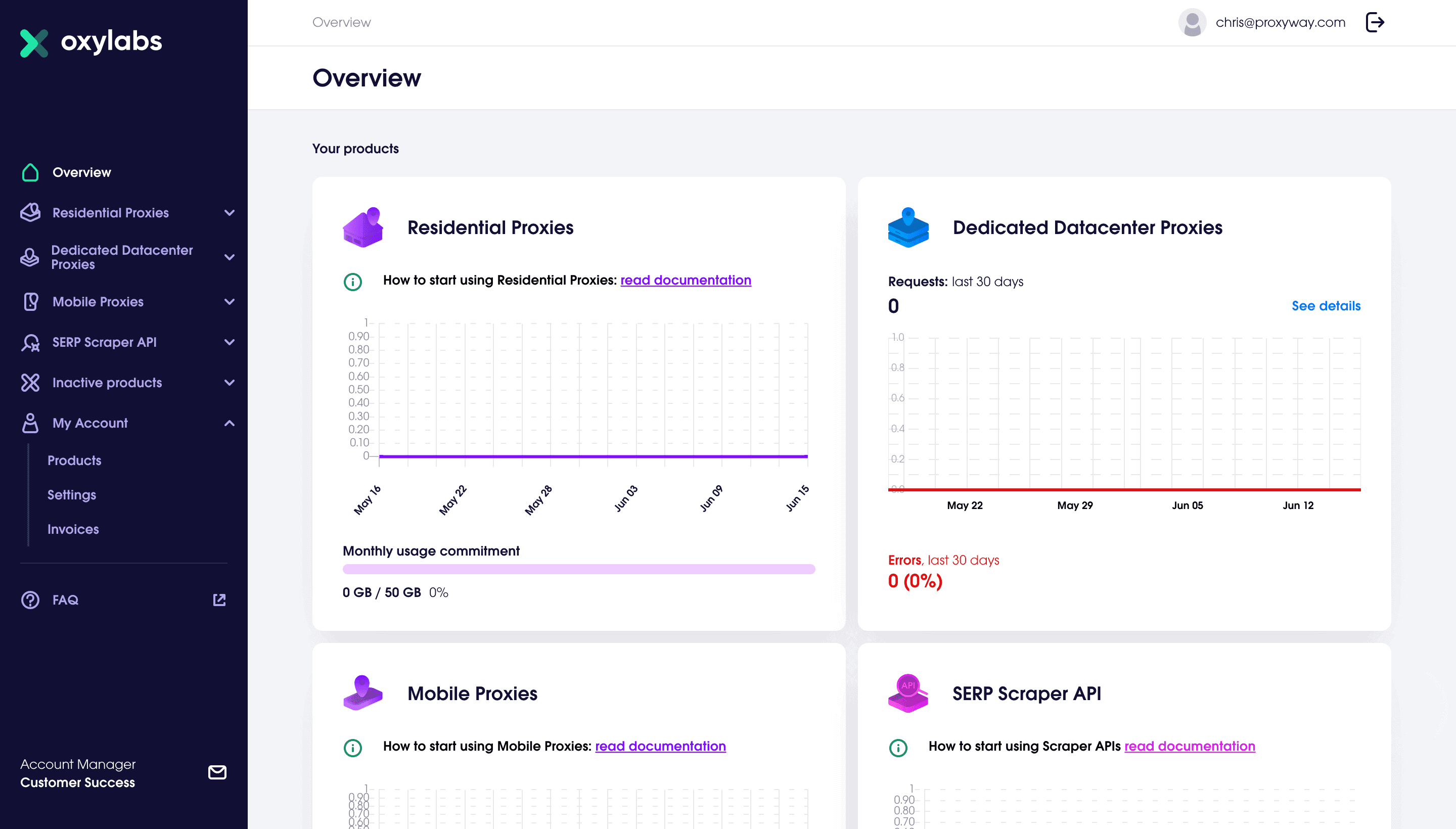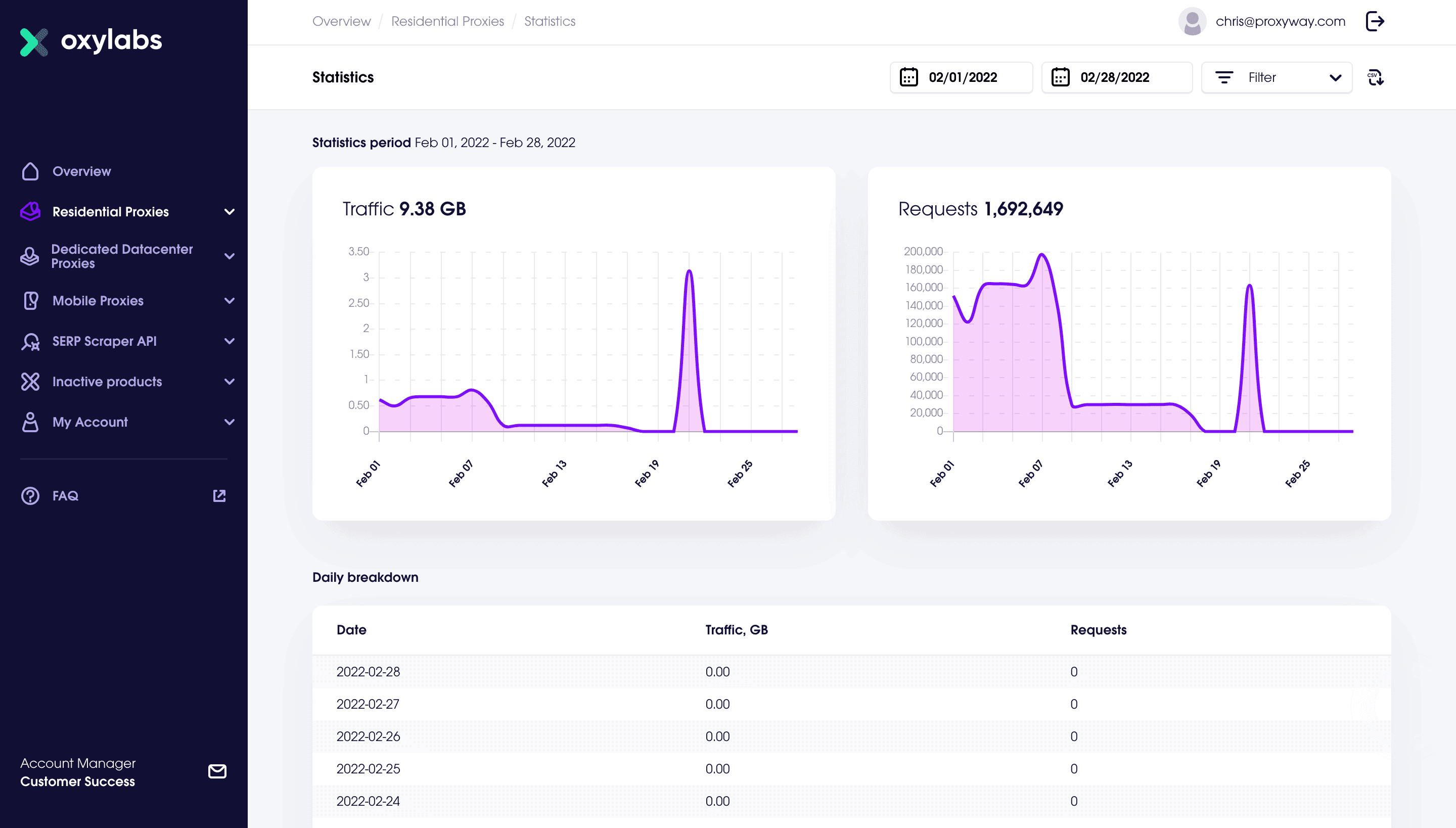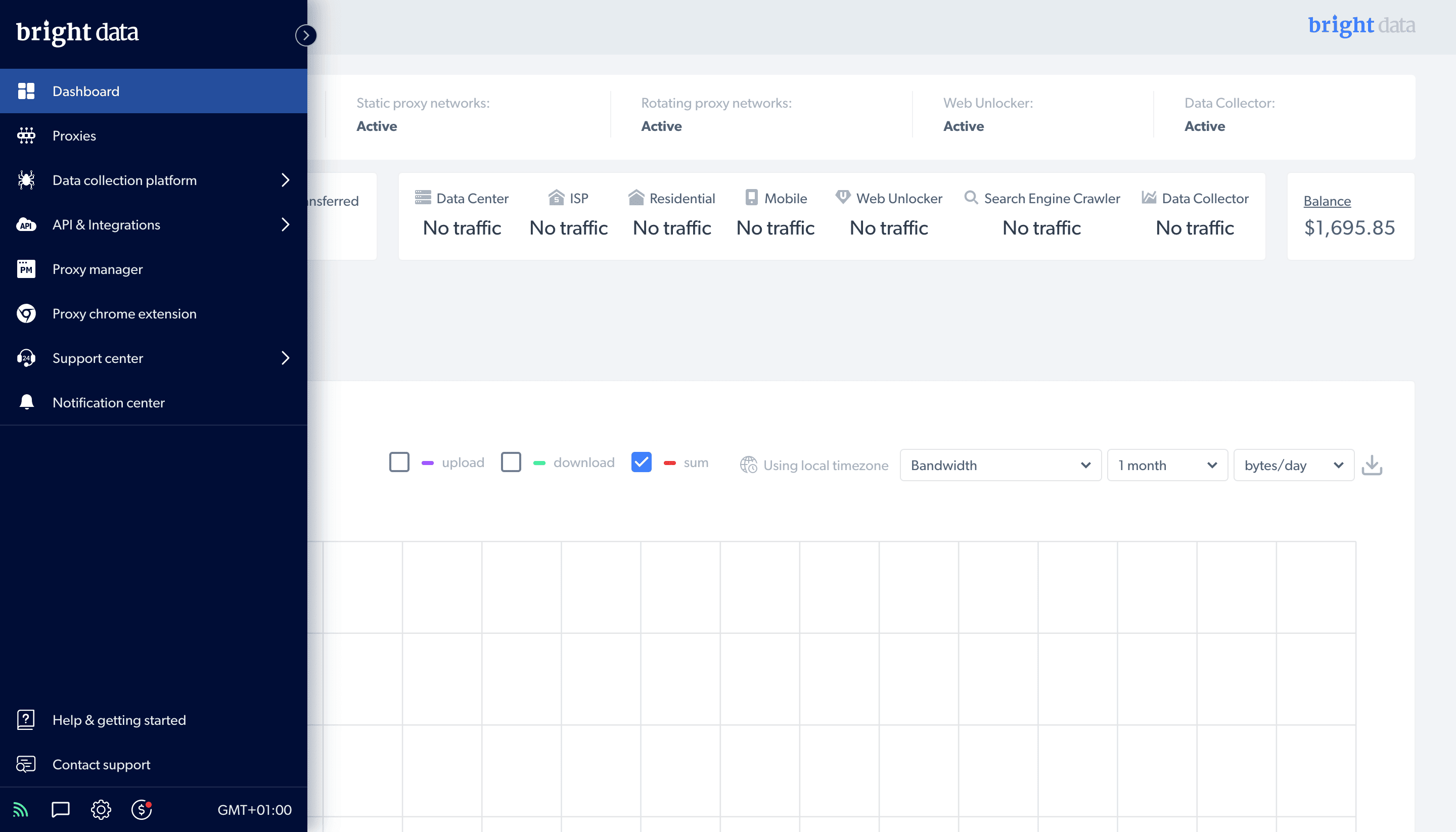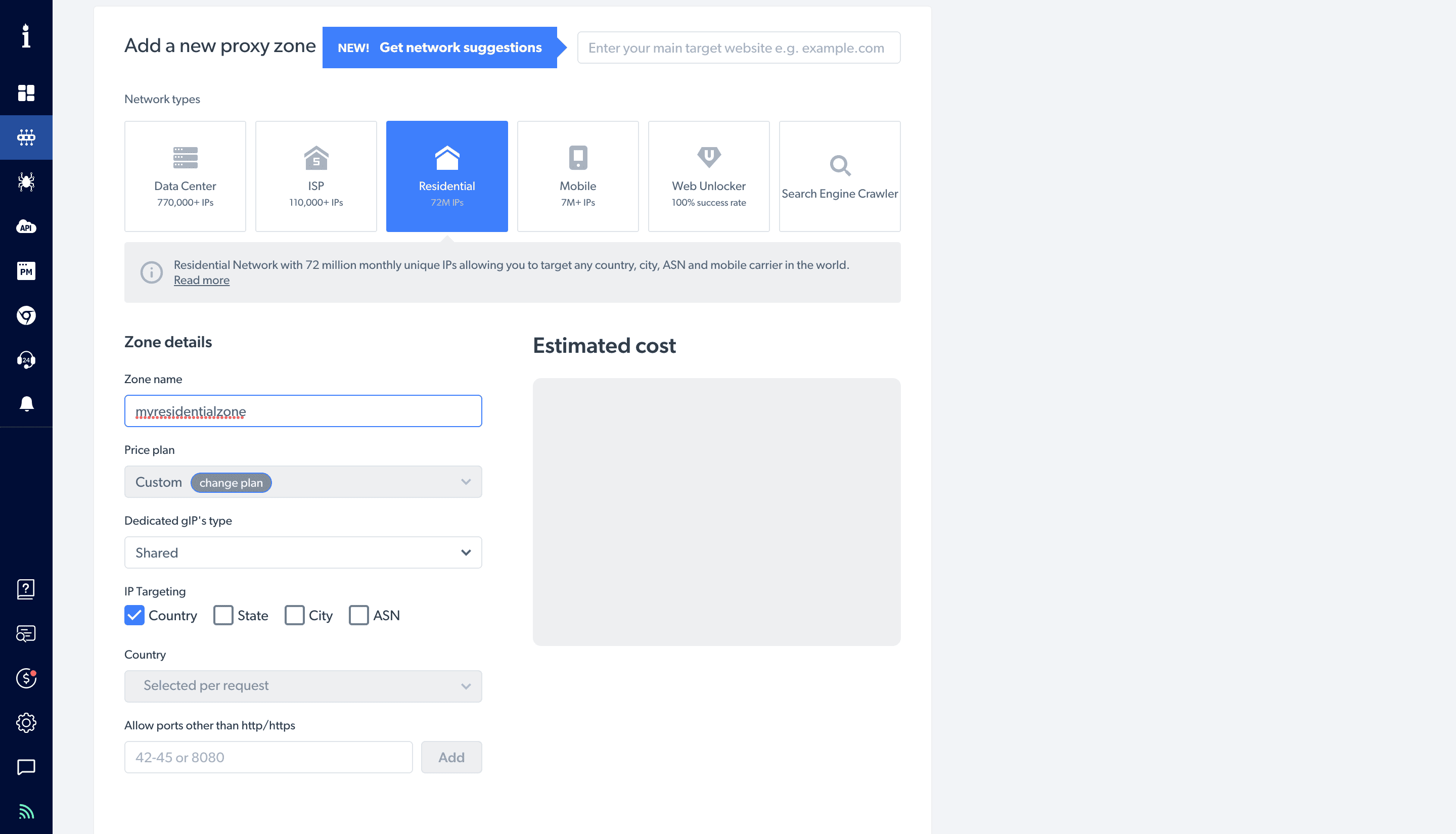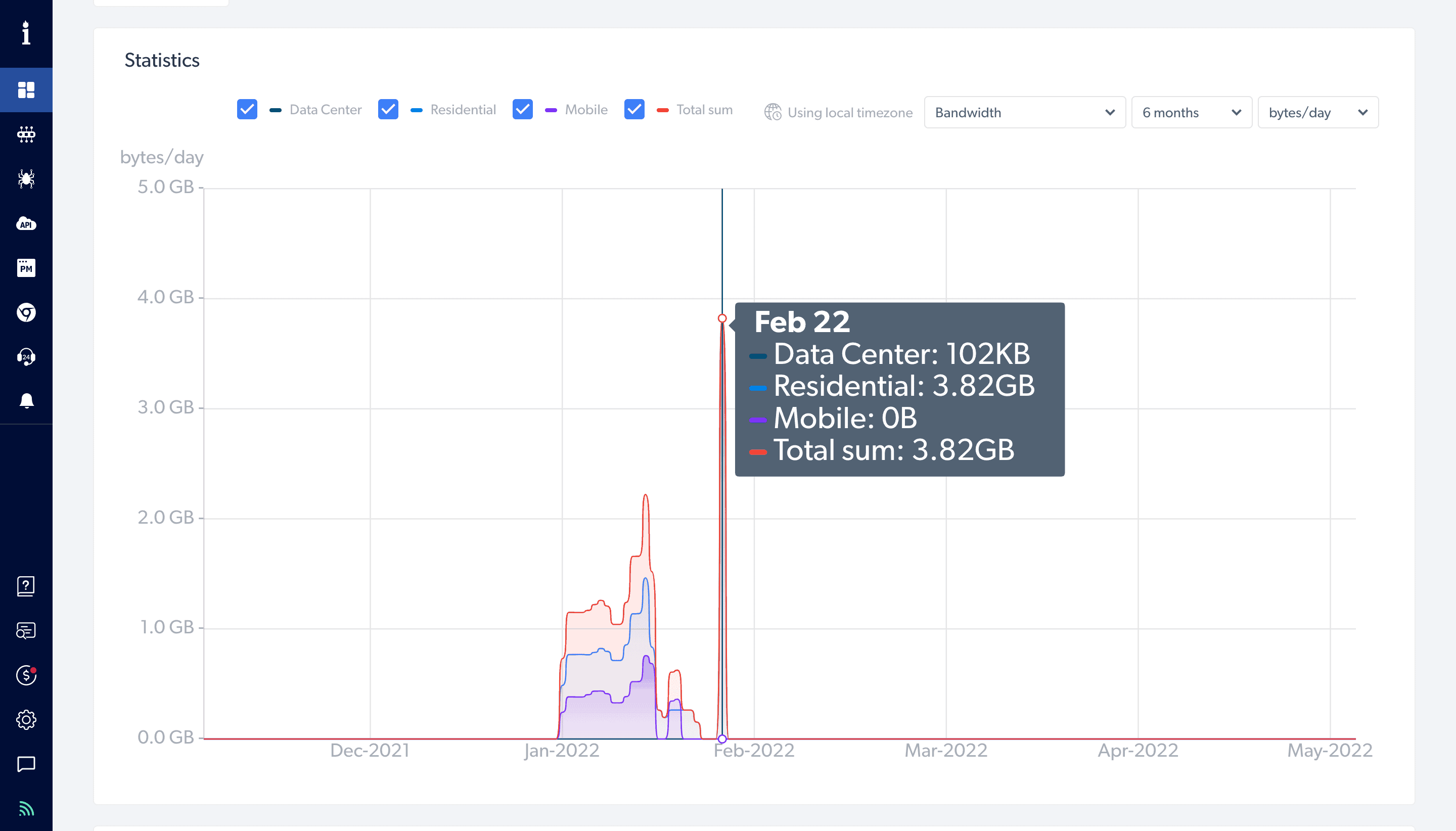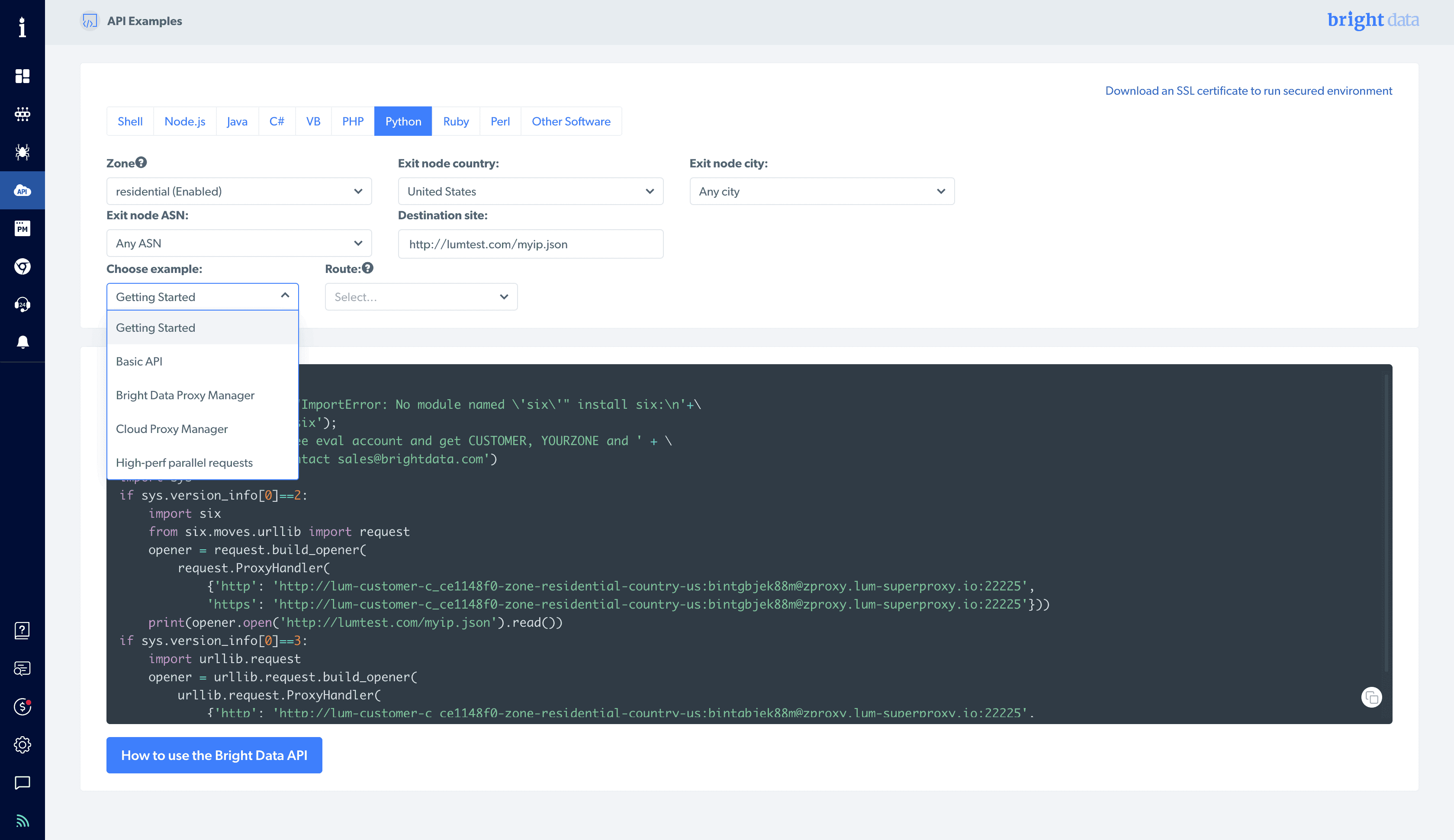Oxylabs vs. Bright Data: Which Is the Best?
Oxylabs and Bright Data are the largest (and probably most advanced) proxy providers today. They target well-off business clients and constantly compete for the top dog position. Each has advantages over the other, but which one is the overall better provider? Let’s find out.
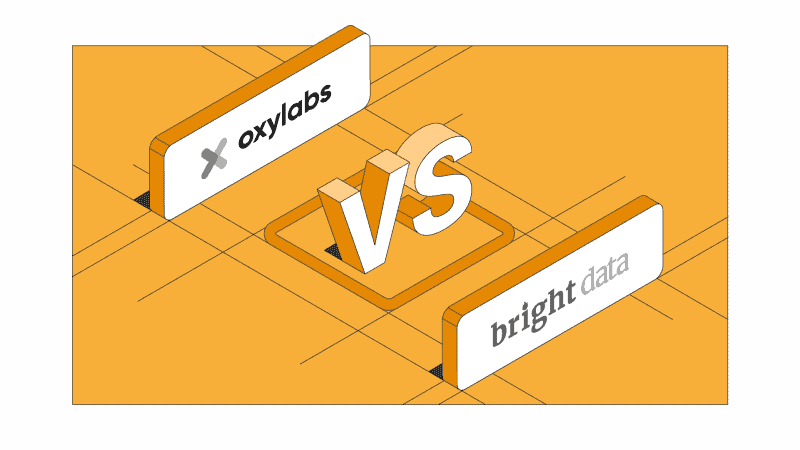
Summary
Oxylabs and Bright Data are both excellent choices. Their proxy networks are large, full of features, and exhibit similar market-leading performance. In addition, you can get multiple proxy-based products to simplify your web scraping.
Overall, choosing Oxylabs would give you the same or better performance, proxy pool, and a lower price. Going with Bright Data would give you more customizability and access to services that Oxylabs doesn’t have: namely, a Web Scraper IDE and market intelligence insights.
Here’s a quick table of the aspects we compared:
| Oxylabs | Bright Data | |
| Variety of services | ★★★★☆ | ★★★★★ |
| Proxy pool size | ★★★★★ | ★★★★★ |
| Proxy features | ★★★★☆ | ★★★★★ |
| Performance | ★★★★★ | ★★★★★ |
| User experience | ★★★☆☆ | ★★★☆☆ |
| Customer service | ★★★★★ | ★★★★☆ |
| Price | ★★☆☆☆ | ★☆☆☆☆ |
| Visit Oxylabs | Visit Bright Data |
Oxylabs vs Bright Data (Luminati): Overview
| Oxylabs | Bright Data | |
| Jurisdiction | Lithuania | Israel |
| Founded | 2015 | 2014 |
| Services |
|
|
| Target audience | Small to large businesses | Small to large businesses |
| Price range | Premium | Premium |
| Awards | Best Overall Provider (2022) Best Proxy Performance (2023) Best Proxies for Enterprise (2024) | Best Tools for Data Collection (2022) Most Innovative Provider (2023) Best Platform for Proxies (2024) |
| Trustpilot score (June 2024) | 4.6 | 4.6 |
Oxylabs and Bright Data were founded at similar times; Oxylabs hails from Lithuania, while Bright Data’s home is Israel.
The providers mainly sell proxy networks. But for these past few years, they’ve been giving increasing attention to proxy-based web scraping tools, such as APIs, and offering complete pre-scraped datasets. Bright Data even positions itself as a web data collection platform.
Both Oxylabs and Bright Data try to cover the whole market spectrum by offering flexible commitment (pay-as-you-go, micro plans). In reality, both providers favor larger businesses as they bring more revenue.
Both providers show great care to their business practices – they screen customers and have mechanisms to ensure ethical proxy acquisition and use. You can read (or watch) our interviews with Oxylabs and Bright Data to learn more.
We’ve been awarding Oxylabs for several years in a row for its exceptional service and performance. Bright Data has received multiple awards as well, mostly celebrating its stack of proxy management tools.
What Exactly Can These Providers Offer You?
Oxylabs
| Proxy networks | Web scraping tools | Other tools |
|
|
|
Oxylabs can offer you every type of proxy network available. You can get IPs from a data center, peer-to-peer proxies connected to Wi-Fi routers or SIM cards, and datacenter addresses registered under consumer internet services (ISP proxies).
Where possible, you can choose proxies in multiple formats. If you need datacenter or ISP proxies, the providers let you buy lists of static addresses; or, you can access a pool of rotating IPs instead. This brings a lot of flexibility.
You can also get three proxy-based APIs for web scraping. Web Scraper API returns the HTML of any website, but it doesn’t parse results. SERP Scraper API and E-Commerce Scraper API can structure their namesake website groups in JSON (and sometimes CSV) for easier processing. Additionally, you can purchase datasets to get a collection of structured data.
Finally, Web Unblocker is a proxy network with a web scraping layer on top. It functions as a remote web scraper that integrates as a proxy server. It can overcome website protection mechanisms, CAPTCHAs, and retry failed requests to return data with a 100% success rate. The difference from the web scraping APIs is that this service integrates only as a proxy server.
Bright Data
| Proxy networks | Web scraping tools | Other services |
|
|
|
Like Oxylabs, Bright Data can provide you with any type of proxy server available. Once again, you can choose from several formats like static IP lists or a rotating proxy pool.
Bright Data also has its share of proxy-based APIs. Web Unlocker is a counterpart of Oxylabs Web Unblocker, in that it comes as a proxy server and can access any protected website. Another tool, Scraper API is specifically designed for work with search engines – it can scrape and structure data from all major search platforms like Google and Bing.
One area where Bright Data has the upper hand is Web Scraper IDE. It combines ready-made website code templates and JavaScript functions, mainly focusing on developers. However, if you don’t want to meddle with pre-made codes, you can contact the provider with your target page, and it will handle data extraction on your behalf. The scraper is designed for the most popular e-commerce, social media, business, travel, and real estate websites.
Like Oxylabs, Bright Data allows you to buy pre-scraped data sets. Moreover, the provider offers Bright Insights – e-commerce intelligence – that can be of help to various vendors.
Which Provider Controls a Larger Proxy Network?
It’s a close call but Oxylabs takes the crown.
Looking at advertised numbers alone, Oxylabs controls some of the largest proxy networks in the world. It has 2 million datacenter addresses, 20 million mobile IPs, and over 100 million monthly residential IPs. These numbers are no joke.
That said, Bright Data is no slouch either. With 72 million monthly addresses, its residential proxy network is one of the largest in the market, and the provider controls respectable amounts of mobile and datacenter proxies (7M and 770K respectively.)
When we tested their residential and mobile proxy networks in practice, both providers had hundreds of thousands of unique IPs, beating smaller competitors in countries like the US ten times or more. Compared to one another, Bright Data returned slightly more residential proxies but was convincingly beaten in terms of mobile IPs.
Whose Proxies Have More Features?
As premium providers, Oxylabs and Bright Data are very generous in the feature department. With either option, you’ll be able to:
- Use proxies in any country or city in the world.
- Target individual countries, cities, ASNs, ZIP codes, and coordinates. Bright Data also allows targeting specific operating systems.
- Rotate each proxy type on every connection request or create sticky sessions.
- Establish as many parallel connection requests as you like.
- Use the HTTP(S) or SOCKS5 protocols.
Of course, you won’t always have access to all these features at once – it depends on the service. For example, Oxylabs doesn’t support SOCKS5 with its datacenter proxies, and some of its services don’t support city or ASN-level filtering. Overall, Bright Data makes more of the functionality consistently available, so it takes a slight edge.
Here’s a comparison table:
| Oxylabs | Bright Data | |||||||
| Datacenter | ISP | Residential | Mobile | Datacenter | ISP | Residential | Mobile | |
| IPs | 22,000 (rotating) | Unknown | 100 million | 20 million | 770,000 (rotating) | 700,000 | 72 million | 7 million |
| Type | Shared, dedicated | Shared | Shared, dedicated | |||||
| Locations | 188 countries | US & Europe | All countries | 98 countries | 35 countries | 195 countries | ||
| Filtering | Country; state & city with dedicated | Country | Country, state, city, ASN, coordinates; ZIP code with residential | Country, city | Country, state, city, ASN, ZIP code, OS; coordinates with residential | |||
| Rotation | Every request, indefinite sessions | Every request, 5 hours | Every request, sticky sessions up to 30 mins | Every request, as long as available (customizable with Proxy Manager) | ||||
| Threads | Unlimited | |||||||
| Protocols | HTTP | HTTP(S), SOCKS5 | HTTP(S), SOCKS5 | |||||
| Authorization | Credentials, IP whitelisting | |||||||
Which Provider Performs Better?
Both are excellent and rarely fail. That said, Oxylabs’ proxies run faster.
We mostly benchmarked the providers’ residential and mobile proxies. When connecting to Cloudflare’s server (small size, low distance, no blocks), over 97% of the requests completed successfully. This shows that the providers have excellent infrastructure that rarely fails.
The response time was also great with both competitors. Oxylabs was particularly fast – its residential proxies from various countries took less than 1 second to connect on average, and 0.5 seconds in Western Europe. Bright Data was slightly slower but also among the fastest providers we’ve tested. Mobile proxy response time was similar, though Oxylabs’ proxies were a tad faster.
Which Has Better Management Tools?
Oxylabs is simpler to use, though it does lack quality-of-life features and Bright Data’s unified approach.
We’re comparing premium providers and market leaders, so it’s safe to assume they’ve invested into tooling. And the assumption is generally true.
Let’s begin with the dashboards. Both providers have one, but their approach differs. Oxylabs takes the regular route: each of its services is compartmentalized into separate tabs where you can authorize access, view usage stats, and reach documentation. The only places that combine them are the Overview window and invoices. That said, the overall experience is neat and relatively straightforward, and the usage graphs give detailed enough statistics.
The same goes for proxy management APIs. Bright Data’s approach tries to be all-encompassing, which looks impressive but also makes the API highly complex to understand. Oxylabs has separate APIs for its residential and datacenter services.
Both platforms have wallet functionality and support self-service for all products. It’s worth noting that Bright Data’s approach lets you subscribe to the entire platform and customize which services you aim to use, while with Oxylabs you’re subscribing to a product. A spending analysis offered by both providers is a nice touch, too.
And the Customer Service?
Both providers will treat you well.
Oxylabs has a live chat that works 24/7 and responds to all enquiries. Whenever we tried it, we received replies within several minutes with generally competent answers. Then, there’s a dedicated account manager which gets assigned to all customers who buy anything above the cheapest plans. This combination ensures a personalized experience and a fall-back mechanism once the account managers are offline.
The help materials are excellent as well. Oxylabs provides FAQs for each product, detailed documentation with integration instructions, and webinars for general education about web scraping topics.
Bright Data has no live chat, though it does offer a ticket system for critical issues, which usually ensures under-hour replies. Naturally, there’s an account manager too to help during business hours. The other contact methods include Slack, but it’s available for enterprise clients only.
Bright Data’s help docs are also very comprehensive, with answers and instructions both in text and video formats. You can find an FAQ, webinars, integration instructions, and video tutorials covering various topics.
What about the Price?
Bright Data is more expensive, especially if you enable premium features (that other providers offer out of the box).
Let’s not kid ourselves: these are premium providers. So whichever choice you make, the privilege will cost you.
The providers charge for their services either by IP address, traffic, or requests. The static proxy networks are priced by IP, the rotating proxy networks use traffic, and the APIs base their pricing on successful requests.
Despite offering premium service, both Oxylabs and Bright Data are in line with other providers – usually $2 or $3 more per GB compared to mid-range providers. It’s great that both providers offer flexible commitment (monthly/yearly subscriptions or pay as you go). The plans for Oxylabs start at $8/GB without commitment or $99 (13 GB traffic) for a monthly subscription. Bright Data’s rates start at $8.40 without commitment or $10 ($5.04/GB) with a subscription.
All Bright Data’s plans offer the option to pay as you go (except datasets and Bright Insights). This lets you start using them without a big initial investment. After easing in, you can transition to monthly or yearly plans that start from $300. Here, Oxylabs loses out – you can’t pay as you go for datacenter and ISP proxies, as well as proxy-based APIs.
However, while Oxylabs’ pricing structure is straightforward, Bright Data is deceptively complex. For example, its static datacenter proxies have limited bandwidth out of the box and are able to access only one domain. In the same vein, enabling city or ASN targeting for the residential addresses increases the price. The silver lining is that you can disable unnecessary features to make the pricing relatively palatable (but still expensive).
Here’s a table to show how much you’ll have to pay for different amounts of residential traffic:
| Oxylabs | Bright Data | |
| 1 GB | $8 | $8.4 |
| 5 GB | $40 | $42 |
| 20 GB | $155 | $168 |
| 50 GB | $375 | $420 |
| 100 GB | $700 | $714 |
| 250 GB | $1750 | $1575 |
| 500 GB | $2750 | $2940 |
| 1 TB | $4000 | Custom |
